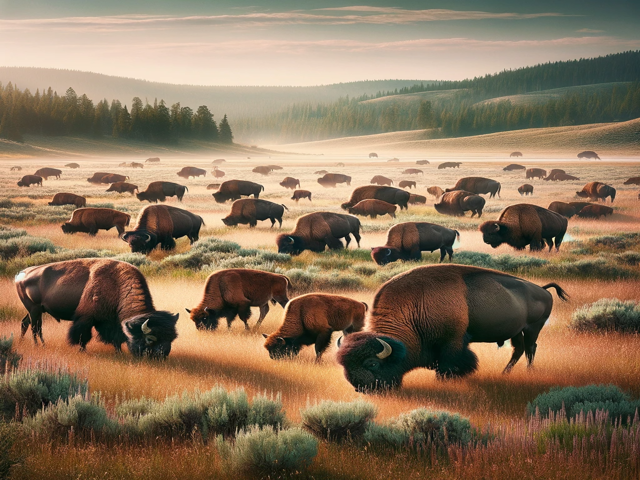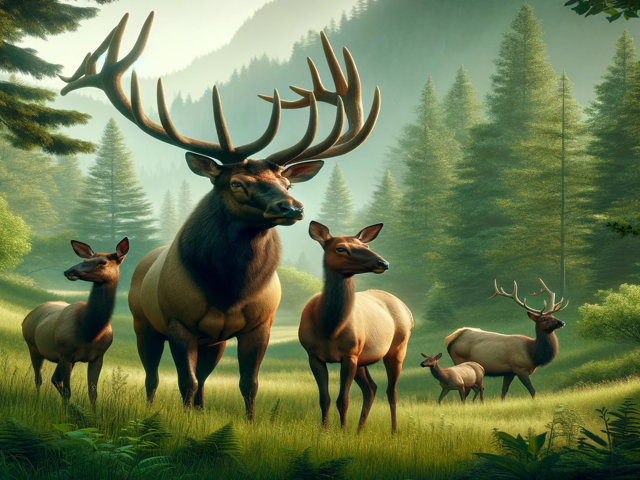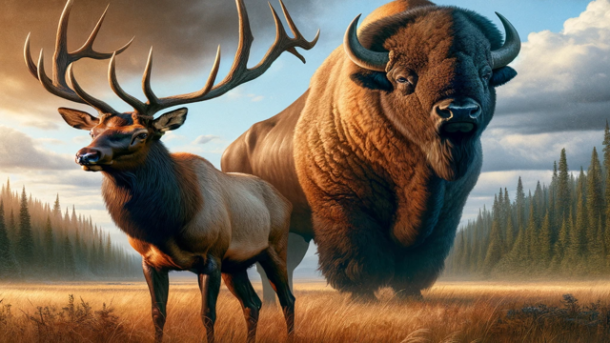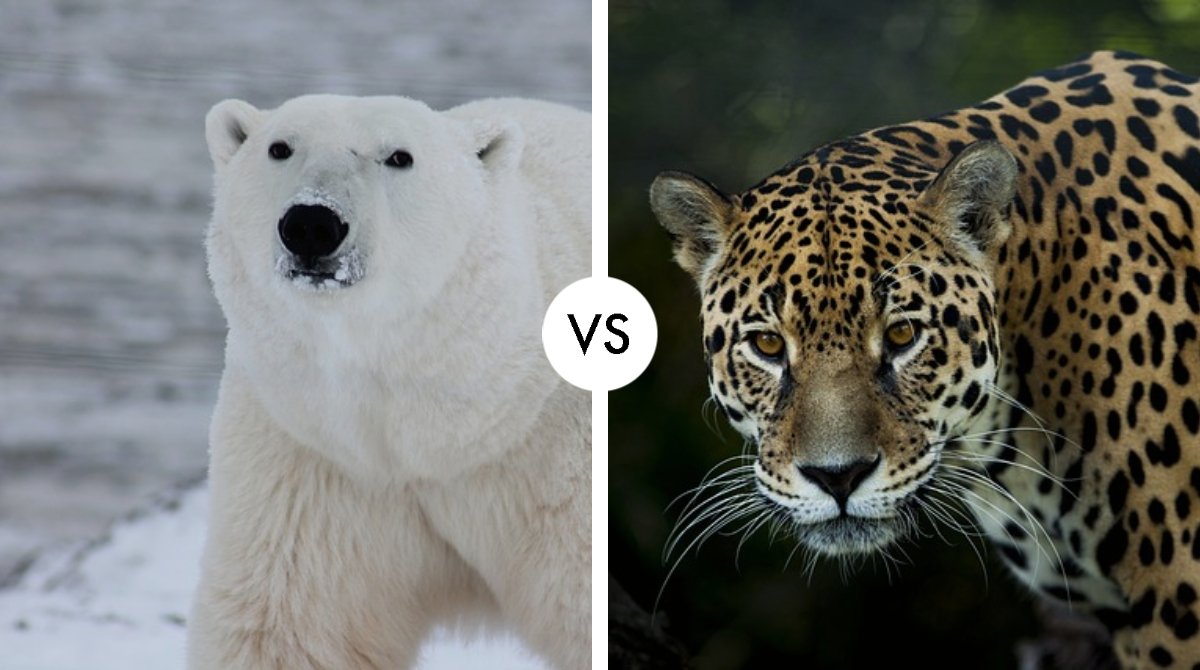In the grand theater of the wild, the bison and the elk play leading roles in the drama of survival. These two majestic creatures, while sharing a common stage in North America’s vast landscapes, lead vastly different lives. Their potential confrontations, though rare, spark a compelling question: In a hypothetical clash between bison and elk, who would emerge victorious?
Lifestyle and Habitat
The American bison, often simply called buffalo, is the heavyweight champion of North American grasslands. A symbol of strength and endurance, bison are primarily grazers. Their day revolves around feeding on grasses and sedges, with their movements dictated by the availability of these resources. They are social animals, living in herds that can number in the hundreds, providing them with protection and communal strength.

Elk, on the other hand, are more versatile in their dietary habits. These majestic deer are both grazers and browsers, feeding on grasses as well as shrubs and tree bark. They inhabit a range of environments, from mountainous regions to forest edges and meadows. Elk herds are typically smaller than bison herds, and they are known for their annual migrations in search of food.
Comparing: Strength and Size
When it comes to physical prowess, the bison is a true behemoth. Male bison, or bulls, can weigh up to 2,000 pounds and stand six feet tall at the shoulder. Their most notable feature is their massive head, which is used effectively in battles for dominance. The bison’s thick fur and muscular hump on their back, which supports their hefty head and neck, add to their intimidating appearance.

Elk, while not as bulky as bison, are still formidable. A male elk, known as a bull, can weigh up to 1,100 pounds and stand five feet at the shoulder. What they lack in bulk, they make up for with their impressive antlers, which can span up to four feet. These antlers are not just for show; they are powerful weapons used in combat with other males during the mating season.
Elk – The Forest’s Giants
Elk, with their impressive antlers and stately stature, are more than just a picture of elegance. In the wild, they are constantly on alert, with predators like wolves and bears posing significant threats. When confronted by these predators, elk deploy a range of tactics:
- Herd Safety: Elk often rely on the safety of numbers. Living in herds makes it more challenging for predators to target a single individual. The young and weak stay in the center, guarded by the stronger members.
- Antler Defense: Male elk, with their large and formidable antlers, can be a daunting challenge for predators. They use these natural weapons to fend off attackers, especially during the rutting season when they are most aggressive.
- Fleeing: Despite their size, elk are surprisingly agile. They often opt to run away from danger, using their speed and endurance to outpace predators.
- Alertness: Elk have acute senses of hearing and smell, enabling them to detect predators early and take evasive action.
Bison Herd
Bison, the hulking beasts of the prairies, are an embodiment of brute strength. Predators like wolves and bears, although formidable, often find it challenging to take down a healthy adult bison. When facing threats, bison have their own set of strategies:
- Protective Circle: When threatened, bison herds form a protective circle, with the weaker and younger members in the middle. This formation presents a united front that can intimidate predators.
- Sheer Size and Strength: An adult bison’s size and strength are its best defenses. They can weigh up to 2,000 pounds and are capable of using their massive heads and horns to deliver powerful blows.
- Charging: Bison are known for their surprising speed and agility, given their size. A charge from a bison can be a formidable and dangerous weapon against predators.
- Stamina: In a prolonged chase, bison can maintain a steady speed and outlast their pursuers, who often rely on a quick and successful strike.
Both elk and bison have evolved sophisticated methods of dealing with predators, a testament to the harsh realities of life in the wild. These strategies not only highlight their physical capabilities but also their social structures and instincts, which have been honed over millennia. In the grand theatre of nature, elk and bison continue to play a pivotal role, symbolizing the balance between strength, intelligence, and the instinct to survive.
Bison VS Elk: Who Would Win?
A direct confrontation between a bison and an elk is unlikely in the wild, as these animals typically avoid unnecessary conflicts. However, in a hypothetical showdown, several factors come into play.
The bison’s sheer size and strength give it a distinct advantage. Their thick skull and strong neck muscles are designed for head-to-head combat, something they frequently engage in during mating season against other bison. This natural armor, combined with their aggressive temperament when threatened, makes them formidable opponents.
Elk, while agile and equipped with dangerous antlers, may struggle against the bison’s brute force. Their strategy in a fight primarily involves using their antlers to jab and keep opponents at bay. However, against the bison’s thick hide and muscular frame, these attacks might not be as effective.
Who Would Win?
In this titanic clash of wilderness giants, the odds lean towards the bison. Their superior size, strength, and combat adaptation make them likely to overpower an elk in a direct confrontation. However, the elk’s agility and sharp antlers cannot be underestimated, as they could potentially outmaneuver and wound the bison.
Chance of Winning:
- Bison: 75%
- Elk: 25%
In nature, battles such as these are rare and often avoided, as both species have evolved to prioritize survival over unnecessary combat. Nevertheless, imagining such a showdown provides a fascinating glimpse into the remarkable adaptations and capabilities of these majestic creatures of the wild.




